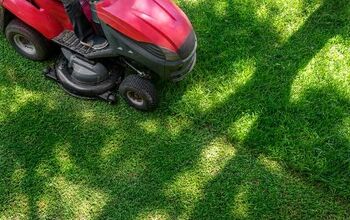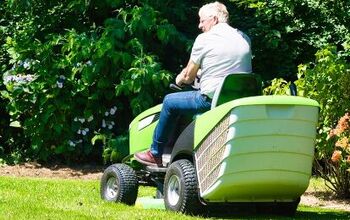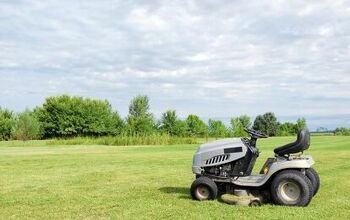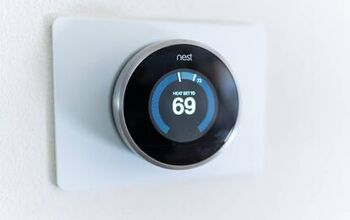Craftsman Riding Mower Turns Over But Won't Start? (We Have A Fix)

Are you having issues with starting up your riding mower? When you go to start it, does it crank over but not completely startup? Thankfully, riding mowers aren’t very complicated pieces of equipment, and the owner can quickly resolve most issues. This will help save you money and time on bringing it into a shop. However, if this happens to you, what do you do?
The most common reason for why your riding mower will turn over but not start is likely due to bad gas or a dirty carburetor. You can usually fix the problem by removing and cleaning out the carburetor and making sure that your gas is fresh. There are carb cleaners you can purchase to help you with this. Simply spray it, and you’re good to go!
However, other causes may include blockage in the air filter, a faulty battery, or having no gas at all. We’ve outlined the basics you should check to assess the problem and some solutions. Follow this guide to fix your issues and get your riding mower back up and running the way that it should.
Related Content: Craftsman Riding Mower Won’t Start And Just Clicks? | How To Change A Spark Plug In A Lawnmower | Will A Lawnmower Run With A Dead Battery?
Do You Need a Mower Repair Service?
Get free, zero-commitment quotes from pro contractors near you.

Check The Basic Problems First
Begin by performing some necessary checks on your riding lawn mower to either completely fix the problem or point you in the right direction. Here’s some of what you should be checking:
- Gas – This sounds obvious, but first, make sure that there is gas in the mower. Also, if the gas has been sitting for a few months, it has gone stale. You’ll need to replenish with a fresh gas supply. Make sure you don’t mix the bad gas with the good. First, siphon out the old gas before putting the new gas in.
- Gas Tap – If your lawnmower has a gas valve, double-check that it is turned on. Gas valves halt the flow of gas to the carburetor. If your lawnmower has one, they’re typically turned off when the mower is not in use.
- Oil Level – To protect the engine, some tractor mowers are designed not to start if the oil level is too low. By refilling the oil, this will help your mower start if that’s the issue. Also, you don’t want to ruin the engine! So it’s a good idea to check your oil on a regular basis anyway.
- Battery Charge – Check how fast your engine is cranking over. If it’s around 350rpm, you can rule out a weak battery. However, if it doesn’t sound like it’s turning over at a normal speed, try giving it a jump start. This may mean that your battery is old and needs to be replaced if this doesn’t help.
- Plug Wire – It’s very common for the plug wire on a mower to come loose. Look for it at the front of the engine to make sure that it’s securely in place.
- Air Filter – Your air filter should be cleaned and checked every 25 hours of use. If it’s blocked, it will prevent your mower from starting up.
- Lock Out – All mowers have particular lockout or safety sensors installed. They will typically prevent the engine from starting unless a set process is followed.
- Choke – Although more modern mowers have an auto choke, if you have a manual one, set it to full in order to start up a cold engine.
What Is The Issue With Ethanol?
Fuel should always be at the top of your checklist when troubleshooting why your mower won’t start. The primary reason why fuel causes so many issues is because many of them are ethanol blended. Ethanol is an alcohol-based fuel that is made from corn and sugar and then mixed with regular gas.
While most small engine manufacturers claim their engines can run on these fuels, the engines, in fact, are not designed to run on ethanol. Also, ethanol attracts moisture, which can become a problem with lawn mowers since their fuel tanks are not sealed.
A moisture problem will typically arise in the spring. During the winter months, the ethanol alcohol in the carburetor will evaporate, releasing moisture. The moisture will corrode, clog up the carburetor, and result in a no start lawnmower.
The Gas Shot Test
In order to find where the problem is, you need to tighten up the search area. Since most riding mowers that are experiencing starting issues are caused by fueling faults, the gas shot test is a great place to start. It’s easy to do on your own, and you don’t need a professional. However, if you want a friend to help you if you don’t know what you’re doing, that’s okay too!
Begin this test with fresh gas and removing the air filter. Next, spray starter fluid or a cap full of gas into the carburetor. Now attempt to start your mower as normal. If your mower attempted to start or completely started up, you’re experiencing a fueling fault. However, if your mower made no attempt to start, it’s likely a lack of spark.
Checking Your Choke System
If you’ve identified that your mower has a fueling system fault, the next step would be to make sure that the choke system is functioning correctly. The choke’s function is to enhance the fuel mixture by limiting the amount of air that enters the carburetor. Although this is only needed on a cold engine, switch your choke lever to full choke before starting the engine. You’ll need to verify that the choke plate is working correctly.
If the choke plate is not closing completely, this will result in a no start. If you found that this is the case, you can adjust the cable so that it moves entirely to the closed position. Additionally, a choke that sticks will give you black smoke and a poor running mower.
Troubleshooting The Spark Plug
If your mower doesn’t start, it could be due to a failed spark plug. Remove the plug to check its condition. This will usually alert you to what may be going on inside the engine.
- Black and oily – A spark plug that is black and oily could indicate too much oil in the engine or some type of mechanical fault.
- Wet – A wet plug will tell you that the engine is getting fuel. However, it may be getting too much and could cause flooding.
- Dry – A dry spark plug may signify a blocked fuel system or choke fault.
In many cases, giving your spark plug a good cleaning may result in your engine starting up. It’s also important to keep in mind that using an incorrect spark plug can cause damage to the engine. Make sure your plug has the proper thread length and heat range for your mower.
You may need to replace your spark plug if it’s still not working. The issue may be that it’s old or just malfunctioning. Take the time to replace the spark plug and see if this fixes the problem.
What Happens If My Lawn Mower Starts Smoking?
Although this may seem frightening, a smoking mower is likely not a severe issue. A healthy mower engine should not smoke, but it’s probably a simple fix. You’ll need to ensure that you have the proper tools to get the job done. You may have to remove a few pieces to get to the spot where the smoke is coming from. However, if your lawnmower is overheating, that’s an indication of a whole new problem for which you’ll need to bring it into the shop.
Your mower’s engine may be smoking because oil leaked into the exhaust muffler when you tilted your mower to the side or your oil chamber is too full. Simply put, your mower is burning off the excess oil while the engine is hot. Look out for blue or white smoke in this case.
If you notice black smoke, this means that your mower is getting too much gas or, like previously mentioned, your choke is sticking. Try giving your air filter a good clean or replacing it entirely. However, if the smoke is a very light color, and this is paired with issues with keeping the mower running, you may want to consult a professional.
Do You Need a Mower Repair Service?
Get free, zero-commitment quotes from pro contractors near you.

Wrapping It Up
If your riding lawn mower will turn over but not start, it’s likely due to an issue with your gas or a dirty carburetor. Try replenishing it with clean, fresh fuel and cleaning out the carburetor. If this doesn’t do the trick, simply performing a few necessary checks can usually narrow down the issue you’re having. When in doubt, consider reaching out to a professional riding mower repair specialist. They’ll be able to identify and fix the problem for you.
By working through every issue, you’re not just checking what needs to be checked; you’re also doing a process of elimination. That way, if you need to bring it to a specialist, you can tell them what you’ve already checked so that it may save you on labor fees. If you’re experiencing other issues with your mower, check out: “ Why Does My Lawn Mower Sputter When Blades Are Engaged?” or “ Husqvarna Riding Mower Blades Won’t Engage? (We Have a Fix).”
Check Out Our Other Craftsman Riding Mower Guides

Jessica considers herself a home improvement and design enthusiast. She grew up surrounded by constant home improvement projects and owes most of what she knows to helping her dad renovate her childhood home. Being a Los Angeles resident, Jessica spends a lot of her time looking for her next DIY project and sharing her love for home design.
More by Jessica Stone



























